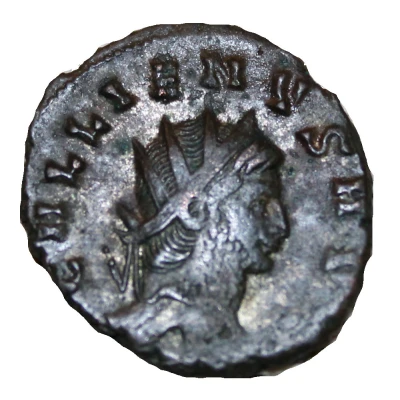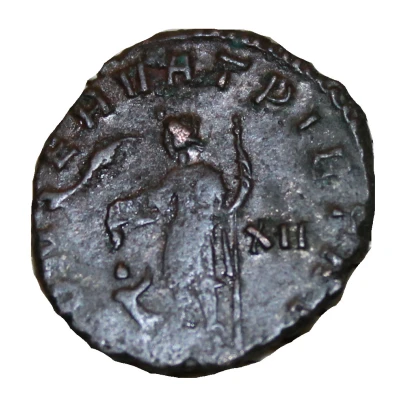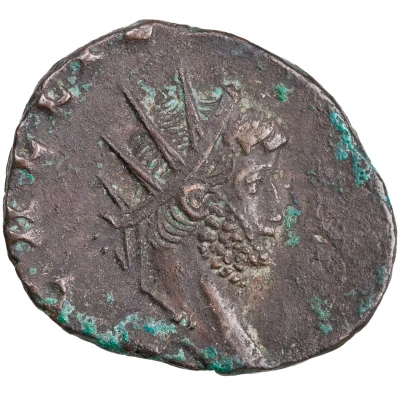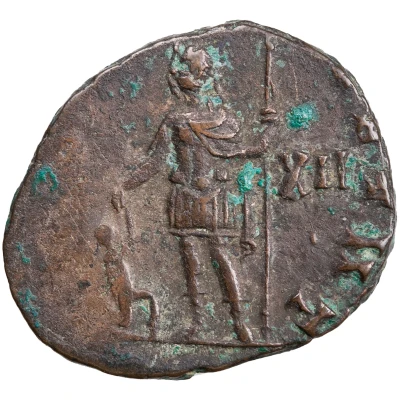


© draiv
Antoninianus - Gallienus CONSERVAT PIETAT
| Silver | 2.45 g | 20.5 mm |
| Issuer | Rome › Roman Empire (27 BC - 395 AD) |
|---|---|
| Emperor | Gallienus (Publius Licinius Egnatius Gallienus) (253-268) |
| Type | Standard circulation coin |
| Years | 260-268 |
| Value | Antoninianus (1) |
| Currency | Antoninianus, Reform of Caracalla (AD 215 – 301) |
| Composition | Silver |
| Weight | 2.45 g |
| Diameter | 20.5 mm |
| Shape | Round (irregular) |
| Technique | Hammered |
| Demonetized | Yes |
| Updated | 2024-10-05 |
| Numista | N#39783 |
|---|---|
| Rarity index | 87% |
Reverse
Gallienus standing left in military attire, holding sceptre in left hand and extending right hand to a female figure kneeling before him.
XII or in right field.
Script: Latin
Lettering:
CONSERVAT PIETAT
XII
Translation:
Conservatori Pietati
(Protector of the Dutifulness)
Interesting fact
The Antoninianus coin was issued during the reign of Gallienus, who was the Roman Emperor from 260 to 268 AD. During his reign, the Roman Empire was facing numerous challenges, including invasions by barbarian tribes and internal conflicts. Despite these challenges, Gallienus was able to maintain the empire's stability and issue coins like the Antoninianus, which were used for trade and commerce. The coin's design features an image of Gallienus on one side and the goddess Pietas on the other. Pietas was a personification of the Roman virtue of piety and was often depicted on coins as a way of emphasizing the importance of loyalty and devotion to the state and its leaders. The inscription "CONSERVAT PIETAT" on the coin means "May piety be preserved," which further highlights the importance of this virtue in Roman culture. Overall, the Antoninianus coin is a fascinating piece of history that provides insight into the political and cultural landscape of the Roman Empire during the 3rd century AD.

